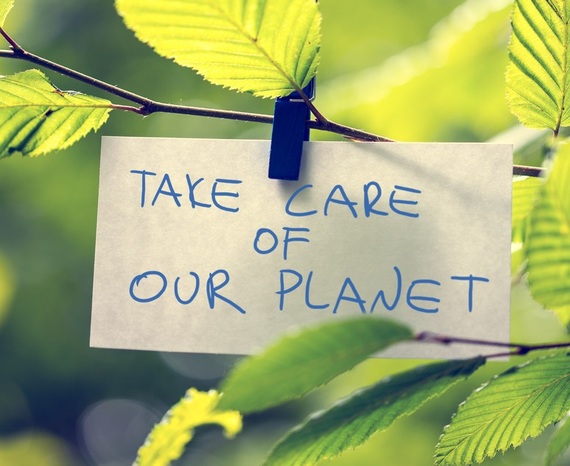From cost savings to positive PR, increasingly "going green" is a modern business imperative. A brand's social purpose and green footprint are among the factors that influence purchasing decisions, reports Nielsen. Globally, more than half of all consumers are willing to pay more for sustainable products and services from businesses that are committed to social and environmental impact.
With Earth Day right around the corner, there's no time like the present to green your business practices. Planning to make a bold statement like relocating to a LEED certified office space? Searching for small but impactful ways to be more energy efficient and conservation-minded? I've rounded up five important ways your business can go green for Earth Day and beyond.
1. Green your building. Looking to make a major change in your green footprint? Then consider making a change of address to a LEED building. LEED, which stands for Leadership in Energy & Environmental Design, is a green building certification program recognizing best-in-class buildings. LEED certified office buildings prioritize energy efficiency and CO2 emissions reductions in the building's design, construction, and day-to-day operation. Buildings that utilize sustainable energy and eco-friendly technology are no longer a rarity. The infographic below from TPC Trainco shows a few of the newest "super-green" buildings in the United States - is one near your city?
2. Green your suppliers.The supply chain accounts for 90 percent of a company's total greenhouse gas emissions, reports Fred Krupp with the Environmental Defense Fund (EDF). Big corporate giants like Walmart, which partnered with the Environmental Defense Fund (EDF), have scaled sustainability across their supply chains simply by encouraging suppliers to make efficient use of raw materials. While the purchasing power of a corporate giant like Walmart certainly makes a major impact on the supply chain, don't underestimate the impact that your purchasing decisions can make, too.
Do you work with a large "anchor" company like Nestle or Bristol Myers-Squibb? Both of these companies have worked with small businesses to institute supply chain reforms. According to GreenBiz, these reforms cut waste disposal by 1455 tons, saved 42,000 kilowatt-hours a year of electricity, and reduced carbon dioxide emissions by 61 tons per year. Those are some pretty big savings!
3. Improve energy efficiency.Have rising energy prices left your business feeling the financial pinch? The Environmental Protection Agency's (EPA) Energy Star for Small Business reports that small businesses can easily realize real cost savings simply by increasing their energy efficiency between 10 to 30 percent. The EPA recommends evaluation facility operation, maintenance and current technologies for potential cost savings, like investing in EnergyStar appliances and equipment.
4. Stop the paper trail.Take a look at your desk right now: do you have a big stack of paper on it? We're all guilty from time to time of printing far more information than we really need to. Paper and paperboard comprise nearly half our garbage, estimates the EPA. The average office worker uses 10,000 sheets of paper every year- yikes! Rather than printing that big PowerPoint deck to review, edit it directly on your computer. Stop printing out emails or reports unless they're absolutely necessary to file away, and if you must, then print double-sided to save paper. While recycling paper is important, you can do even more simply by reducing paper waste in the first place. Ready to make an, even more, drastic change to your office? Get rid of your filing cabinet and start using a cloud-based storage service for backup.
5. Recycle used electronics.The metals in our electronic products take significant energy to mine and manufacture, contributing to greenhouse gas emissions and pollution. Failing to dispose of old electronics properly means that the metals and valuable electronic components are unable to be used again in consumer goods. Consider this: for every one million cell phones the U.S. recycles, we recover 35,000 pounds of copper and 75 pounds of gold that can be used again, reports the EPA. Organize a company-wide electronic recycling day and invite employees to bring in personal electronics, like old laptops or cellphones, for recycling. Once you've wiped the electronics for personal information, contact your local electronics recycling center.
Bottom line:
Our climate is in peril and it is our generation's responsibility provide better environmental stewardship. From supply chain optimization to simply eliminating the office filing cabinet, small changes have a tremendous impact on the health of our planet earth.

